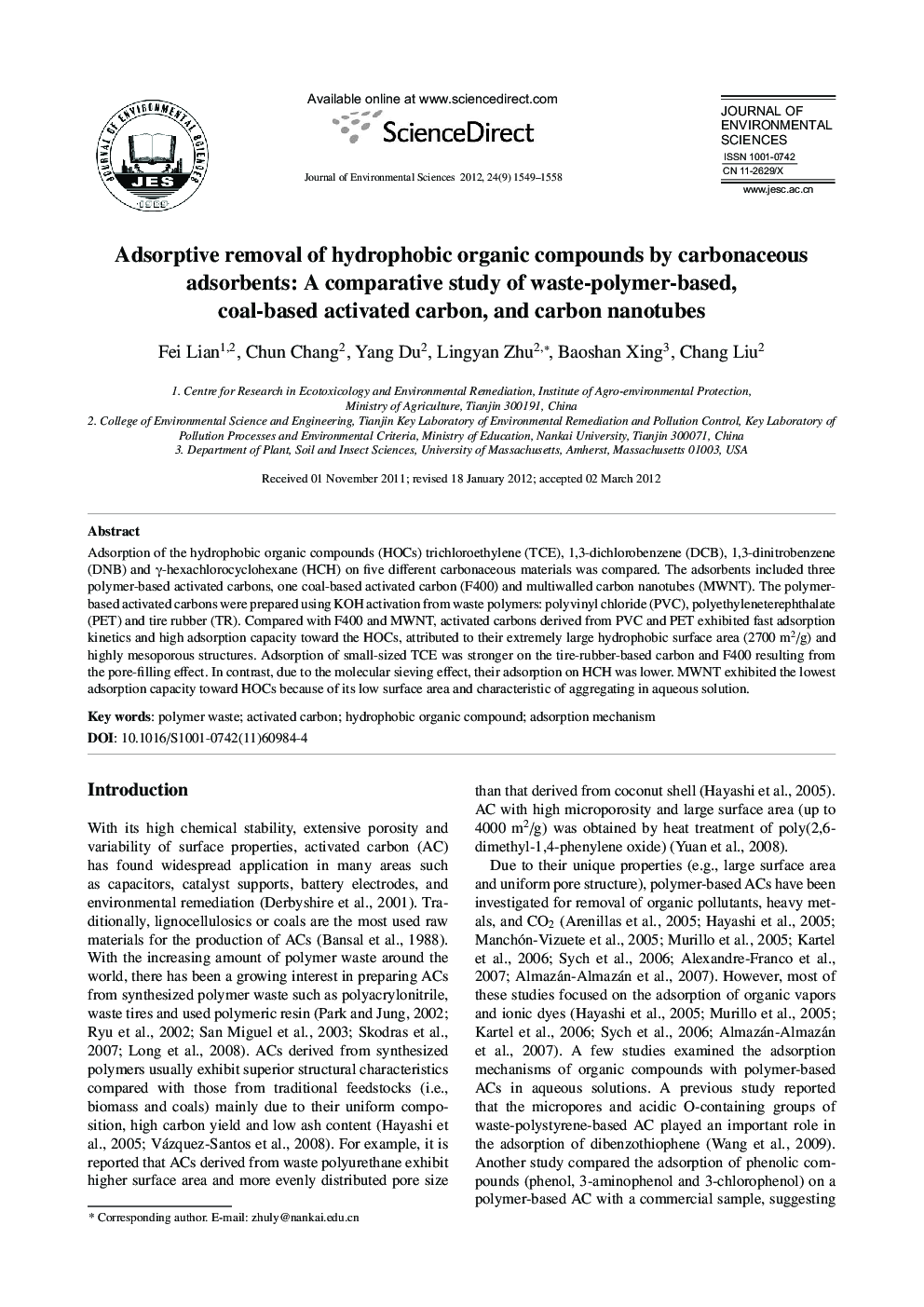| کد مقاله | کد نشریه | سال انتشار | مقاله انگلیسی | نسخه تمام متن |
|---|---|---|---|---|
| 4454411 | 1312480 | 2012 | 10 صفحه PDF | دانلود رایگان |

Adsorption of the hydrophobic organic compounds (HOCs) trichloroethylene (TCE), 1,3-dichlorobenzene (DCB), 1,3-dinitrobenzene (DNB) and γ-hexachlorocyclohexane (HCH) on five different carbonaceous materials was compared. The adsorbents included three polymer-based activated carbons, one coal-based activated carbon (F400) and multiwalled carbon nanotubes (MWNT). The polymer-based activated carbons were prepared using KOH activation from waste polymers: polyvinyl chloride (PVC), polyethyleneterephthalate (PET) and tire rubber (TR). Compared with F400 and MWNT, activated carbons derived from PVC and PET exhibited fast adsorption kinetics and high adsorption capacity toward the HOCs, attributed to their extremely large hydrophobic surface area (2700 m2/g) and highly mesoporous structures. Adsorption of small-sized TCE was stronger on the tire-rubber-based carbon and F400 resulting from the pore-filling effect. In contrast, due to the molecular sieving effect, their adsorption on HCH was lower. MWNT exhibited the lowest adsorption capacity toward HOCs because of its low surface area and characteristic of aggregating in aqueous solution.
Journal: Journal of Environmental Sciences - Volume 24, Issue 9, September 2012, Pages 1549–1558